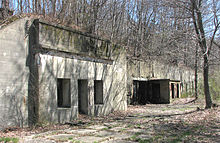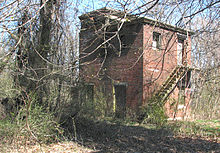Plotting room
The plotting room received data on ship or aircraft position and motion from fire control instruments or their operators and determined and transmitted the range and bearing (a.k.a.With a few exceptions (mostly in Scandinavia), coastal defence gun installations were inactivated shortly after World War II (US) through the middle 1950s (UK).Data could be received and transmitted by telephone, or directly via dedicated electrical systems.[2] The British Watkin position finder system for coastal artillery, which entered service in the 1890s, did not require a plotting room due to mounting a depression position finder (DPF) on a "range dial", similar to a plotting board.An electrical system moved bearing and range dials near the guns as the DPF was manipulated by an operator.




U.S. Army Coast Artillery Corpsplotting boardRoyal NavyK-class destroyerDirector Control TowerType 285 radarFort Andrewsfire control systemnaval gunscoastal artillerybearingazimuthdeflectionUS NavyIowa-classnaval fire controlcalibreanti-aircraftbattleshipscruiserscoastal defenceplotting boardsgun data computersbase end stationscolocatedfire control towersposition finderdepression position finderCoast Artillery fire control systemSeacoast defense in the United States